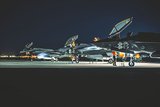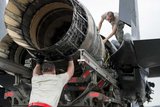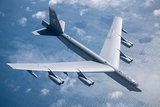OEMs embrace a tailored approach to sustainment (Studio)
Brought to you in partnership with Collins Aerospace
Listen on Spotify here
To sustain their aviation fleets in the modern operational environment, Western militaries must embrace a range of strategies.
These innovative approaches are based on two key aims: overcoming obsolescence challenges, while ensuring value for money by minimising lifecycle costs.
Essentially, ‘sustainment is the driver of the next operation’, in the words of Mike Moody, manager of integrated product support – Future Vertical Lift at Bell.
Moody outlines several key demands for sustainment. This includes the ability to deliver capable aircraft that are easily maintained for their next mission, reducing the burden on the maintainer and cutting the logistics footprint in distant locations.
It must also lower lifecycle costs at reduced risk in the overall operational context, he added.
These are ‘all driving forces in the way we look at sustainment and in the maintenance of these aircraft – cost and operational capability really make a difference in how a customer can behave when [they are] employing your asset, wherever that may be’.
Lifecycle management is a crucial focus, allowing operators to optimise an asset’s life over time if built into the acquisition strategy early on.
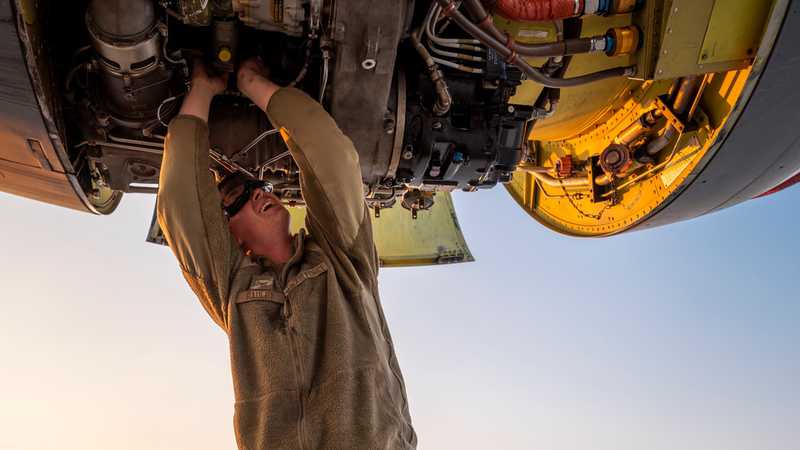
OEMs, such as Collins Aerospace, can implement programmes like performance-based logistics (PBL), a proactive sustainment approach that reduces lifecycle costs while boosting mission readiness.
Francis St Louis is associate director of business development at Collins Aerospace’s mission systems strategic business unit.
Outlining the benefits of PBL and the impact it can have on lifecycle costs, St Louis points to ‘an increase of part availability and proactive obsolescence management’.
Such approaches enable a better analysis of engineering needs, while supporting dedicated, on-site training programmes, he added.
‘Bringing the equipment or system OEM into the acquisition process early benefits the overall lifecycle management strategy,’ he explained.
‘This allows for a tailored sustainment approach to fit the customer’s goals and objectives.’
It’s vital to ensure the highest possible return on investment over the lifetime of the asset or programme, St Louis said; lifecycle cost analysis helps ensure the decision-maker achieves the best results.
For St Louis, it’s crucial to conduct an economic analysis, setting alternatives to assess and compare the impact on future costs.
‘For example, if you want to buy an asset for training purposes versus missions, you're going to adjust your assumptions in your lifecycle costs. Or maybe it's a mix of both [training and missions]. You need to assess that to evaluate the risks.’
St Louis is based in Singapore, an important part of the rapidly growing Asia-Pacific market. The city state’s experience demonstrates how a strong knowledge of lifecycle costs can positively impact a military operator.
Singapore’s procurement authority, the Defence Science and Technology Agency (DSTA) uses a version of lifecycle cost analysis for some of its major procurements, St Louis noted.
This provides the agency with an evaluation framework and acquisition strategy to measure the total lifecycle costs and programme benefits for every proposal the DSTA receives.
‘That helps the DSTA do an objective and quantitative evaluation,’ St Louis explained.
‘The benefits are subsequently weighted against the programme costs and each proposal is compared,’ providing the data necessary to make an effective decision.
Singapore has adapted its operational and sustainment needs to its south-east Asian context over the years, based on its experience.
It has used PBL to support its F-15 fleet, with the logistics approach also likely to play a key role in the future through the country’s F-35 acquisition, noted Chen Chuanren, an Asia-Pacific aviation journalist.
The country’s military operators ‘might do things differently from overseas or Western counterparts’, he noted. After decades of sometimes painful experiences, ‘these lessons are well learned’.
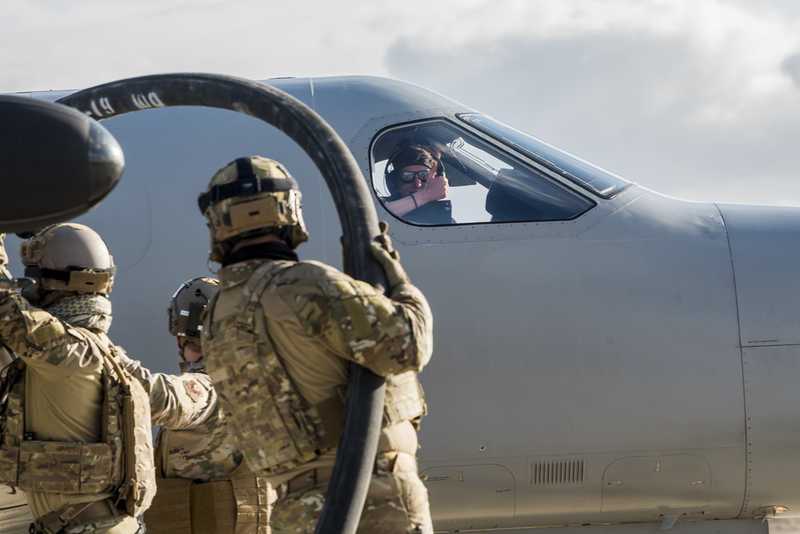
Bell’s customers are increasingly focused on the entire lifecycle cost of their platforms. This is linked to their ability to operate remotely, in a disconnected environment, and to cut back on the logistics footprint, easing the burden on the maintainer, noted Moody.
‘Capability is absolutely critical, but the year-to-year cost of an aircraft really drives the budget,’ he said. The real lifecycle cost comes when an aircraft is in the field, he noted.
‘I think it's ascendant, and it's certainly a very, very large part of the conversation that we have with our government customers and potential partners now.’
Upgrades and modernisation ensures that long-serving aircraft can continue to play a vital role, overcoming potential obsolescence.
This is nowhere truer than in avionics.
Les Worley is a business development manager at Collins Aerospace. He points to several key factors driving avionics upgrades today, including the need to operate in commercial airspace, to replace obsolete equipment, and to acquire unique military-focused capabilities.
Such upgrades can be complex. A partner like Collins can help operators determine how exactly to pursue the work, ranging from relatively simple upgrades to a much larger-scale effort, Worley said.
These systems ‘don’t get turned over like your phone every year or two years’, he said, noting that Collins often works to repair and upgrade systems that are more than 30 years old.
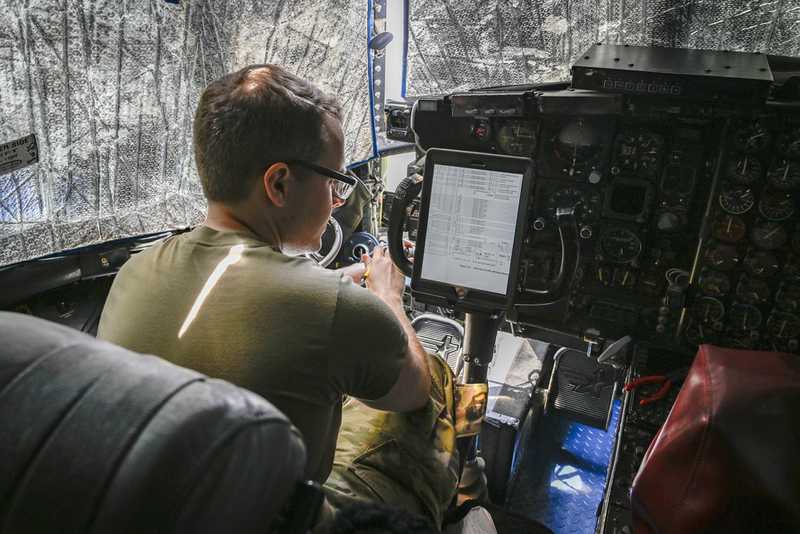
The company approaches this work on a case-by-case basis: while it is possible to replace processing cards, for instance, ‘eventually we will reach the point that those components are no longer made, and it’s much more efficient just to replace the entire avionics box or system’.
Collins has addressed this need directly through a range of systems, perhaps most notably its Flight2 integrated avionics system.
Since the late 1990s, this technology has allowed operators of older aircraft to modify their fleets with advanced communication, navigation and surveillance systems to provide these platforms with all the benefits of modern aircraft. Flight2 will continue to support a range of older aircraft in the US and allied services, such as the KC-135, C-130 and E-3.
As companies like Collins help ensure the continued readiness of such aircraft, the relationship between supplier and operator is crucial, Worley noted.
‘With systems like our Flight2 products and services, we want to make sure that we're hand in hand with those customers, to help them sustain those aircraft so they can fly another 50 years.’
Listen on Spotify here
More from The Critical Care podcast
-
![How has the military placed technology at the heart of aviation sustainment? (Studio)]()
How has the military placed technology at the heart of aviation sustainment? (Studio)
In an increasingly uncertain threat landscape, new and evolving technologies can help sustain ageing aircraft fleets. But to reap the benefits, militaries and industry must collaborate more closely than ever before.
-
![Podcast: Critical Care episode 4 - The operator's view]()
Podcast: Critical Care episode 4 - The operator's view
Welcome to Episode 4 of Shephard Studio’s Critical Care podcast, the story of military aircraft sustainment and support in an unpredictable world.
-
![How can strong industrial partnerships help to enhance fleet readiness? (Studio)]()
How can strong industrial partnerships help to enhance fleet readiness? (Studio)
To adapt to an unpredictable future, military aircraft operators must partner closely with industry, accessing the resources and flexibility they need in a rapidly evolving operational environment.
-
![Podcast: Critical Care episode 3 - Finding the value in military-industry partnerships]()
Podcast: Critical Care episode 3 - Finding the value in military-industry partnerships
Welcome to Episode 3 of Shephard Studio’s Critical Care podcast, the story of military aircraft sustainment and support in an unpredictable world.
-
![Podcast: Critical Care episode 2 - Delivering a tailored approach to aircraft sustainment]()
Podcast: Critical Care episode 2 - Delivering a tailored approach to aircraft sustainment
Welcome to Episode 2 of Shephard Studio’s Critical Care podcast, the story of military aircraft sustainment and support in an unpredictable world.
-
![Collins Aerospace keeps B-52 bomber flying]()
Collins Aerospace keeps B-52 bomber flying
Collins Aerospace has joined the effort to keep the B-52 Stratofortress in service.











